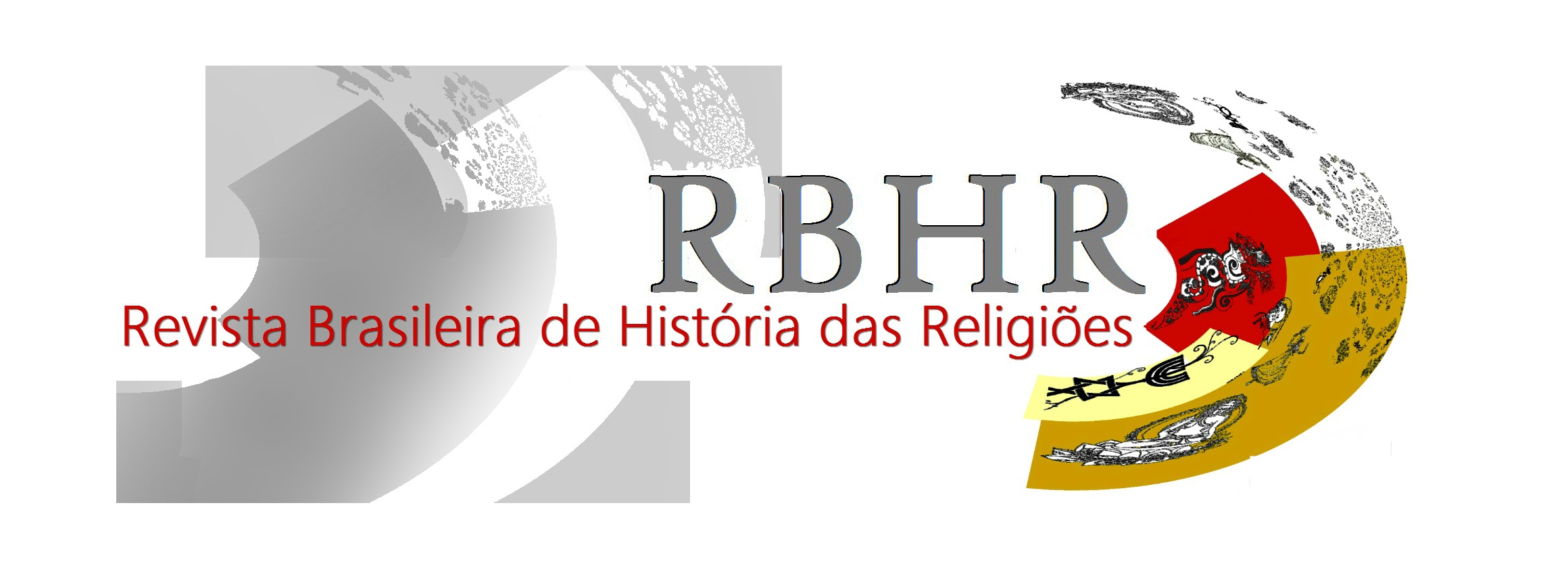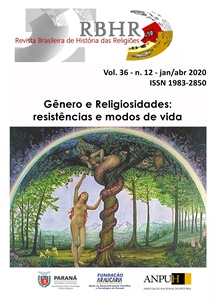Misticismo, xamanismo e magia na religiosidade popular da Galiléia no Movimento de Jesus
Resumo
Este artigo se propõe a analisar a possível conexão entre os aspectos religiosos de um pseudoepígrafo judaico intitulado Livro das Parábolas de Enoque e o movimento messiânico liderado por Jesus. A referida obra foi inserida em meio a outros textos pseudoepigráficos que também discorrem sobre a personagem Enoque, compondo um extenso corpus literário conjugado em um único livro, chamado Primeiro Livro de Enoque. A metodologia da nossa pesquisa está pautada num critério comparativo entre diferentes textos da literatura judaica com aqueles inseridos no Novo Testamento. Nossa conclusão aponta para a teoria que tanto o(s) autor(es) das Parábolas de Enoque quanto o movimento profético/messiânico liderado por Jesus de Nazaré refletem aspectos da religiosidade popular/camponesa da região da Galileia.
Downloads
Referências
AVIAM, Mordechai. The Book of Enoch and the galilean archaeology and landscape. In: CHARLESWORTH, James & BOCK, Darrell. Parables of Enoch: a paradigm shift. T&T Clark International: New York, 2013, pp. 159-169.
BLENKINSOPP, Joseph. A history of prophecy in Israel: revised and enlarged. Kentucky: Westminster John Knox Press, 1996.
CHARLESWORTH, James. From jewish messianology to christian christology: Some caveats and perspectives. In: NEUSNER, Jacob. Judaisms and their messiahs at the turn of the Christian era. Cambridge: The University Press, 1996, pp. 225-264.
______________________. Did Jesus Know the Tradition in the Parables of Enoch? In: BOCK, Darrell L. & CHARLESWORTH, James H. Parables of Enoch: a paradigm shift. New York: Bloomsbury T&T Clark, 2013, pp. 173-217.
COHN, Norman. Cosmos, caos e o mundo que virá: as origens das crenças no apocalipse. SP: Companhia das Letras, 1996.
CORNELLI, Gabriele. A Magia de Jesus. In: CHEVITARESE, André; CORNELLI, Gabriele; SELVATICI, Mônica. Jesus de Nazaré: uma outra história. SP: Annablume, FAPESP, 2006, pp. 83-100.
CROSSAN, John D. O Jesus Histórico: a vida de um camponês judeu no Mediterrâneo. RJ:Imago, 1994.
DAY, John. Yahweh and the gods and goddesses of Canaan. New York: Sheffield Academic Press, 2002.
ELIADE, Mircea. O Xamanismo e as técnicas arcaicas do êxtase. SP: Martins Fontes. 1998.
GINZBURG, Carlo. O queijo e os vermes: o cotidiano e as ideias de um moleiro perseguido pela inquisição. SP: Companhia das Letras, 2006.
GRABBE, Lester. The Parables of Enoch in Second Temple Jewish Society. In: BOCCACCINI, Gabriele. Enoch and the Messiah Son of Man: revisiting the Book of Parables. MA: Cambridge: Eerdmans Publishing Co., 2007, pp. 386-402.
MACHADO, Jonas. O misticismo apocalíptico do apóstolo Paulo: um novo olhar nas Cartas aos Coríntios na perspectiva da experiência religiosa. SP: Paulus, 2009.
MULLEN, Theodore E. The assembly of gods: the divine council in canaanite and early hebrew literature. Harvard Semitic Monographs, 1980.
NICKELSBURG, George W. Salvation without and with a messiah: developing Beliefs in writings ascribed to Enoch. In: NEUSNER, Jacob. Judaisms and their Messiahs at the turn of the christian era. MA: Cambridge: The University Press, 1996, pp. 49-68.
PIOVANELLI, Pierluigi. A testimony for the kings and mighty who possess the earth: the thirst for justice and peace in the Parables of Enoch. In: BOCCACCINI, Gabriele. Enoch and the messiah Son of Man: revisiting the Book of Parables. MA: Cambridge: W. B. Eerdmans Publishing Co., 2007, pp. 363-379.
VANDERKAM, James C. Enoch and the Growth of an Apocalyptic Tradition. Washington D. C.: The Catholic Biblical Association of America, 1984.
_____________________. Enoch: a man for all generations. University of South Carolina Press, 1995.
WALCK, Leslie. The Son of Man in the Parables of Enoch and the Gospels. In: BOCCACCINI, Gabriele. Enoch and the messiah Son of Man: revisiting the revisiting the Book of Parables. MA: Cambridge: W. B. Eerdmans Publishing Co., 2007, pp. 299-337.
WILSON, Robert R. Prophecy and society in ancient Israel. Philadelphia: Fortress Press, 1980.
Copyright (c) 2019 Daniel Soares Veiga

This work is licensed under a Creative Commons Attribution-NonCommercial-NoDerivatives 4.0 International License.
DECLARAÇÃO DE ORIGINALIDADE E DIREITOS AUTORAIS
Declaro que o presente artigo é original, não tendo sido submetido à publicação em qualquer outro periódico nacional ou internacional, quer seja em parte ou em sua totalidade.
Os direitos autorais pertencem exclusivamente aos autores. Os direitos de licenciamento utilizados pelo periódico é a licença Creative Commons Attribution 3.0 (CC BY 3.0): são permitidos o acompartilhamento (cópia e distribuição do material em qualqer meio ou formato) e adaptação (remix, transformação e criação de material a partir do conteúdo assim licenciado para quaisquer fins, inclusive comerciais.
Recomenda-se a leitura desse link para maiores informações sobre o tema: fornecimento de créditos e referências de forma correta, entre outros detalhes cruciais para uso adequado do material licenciado.







